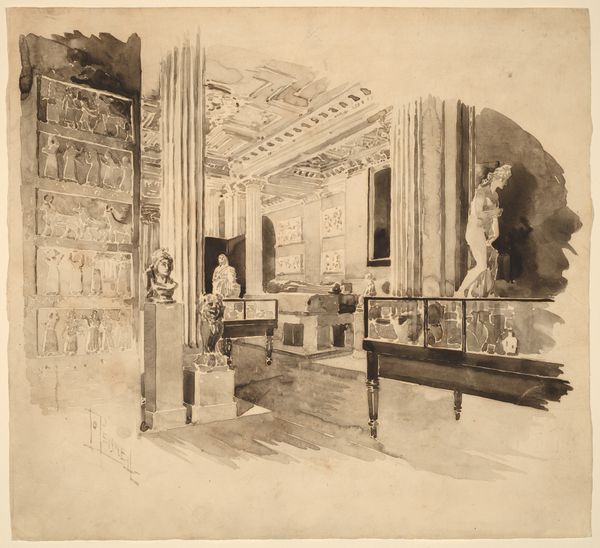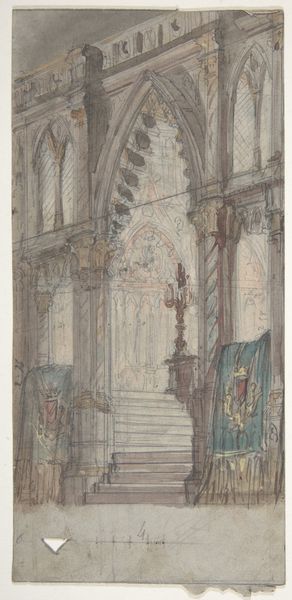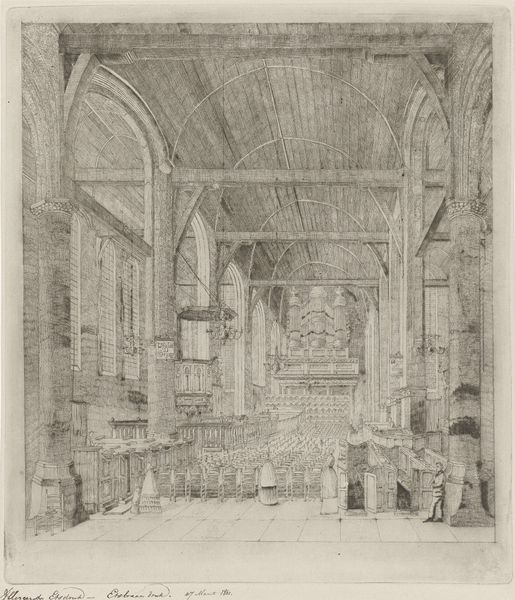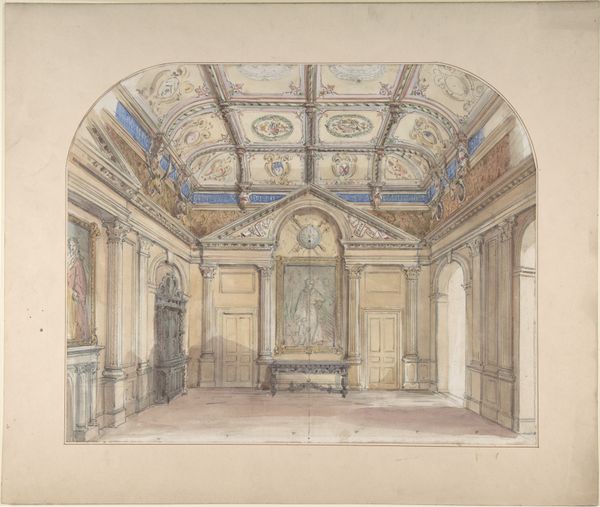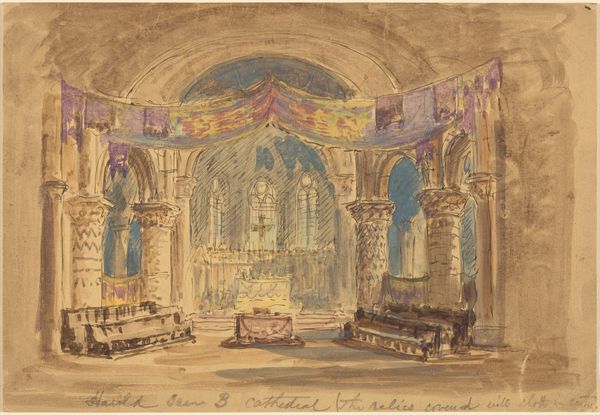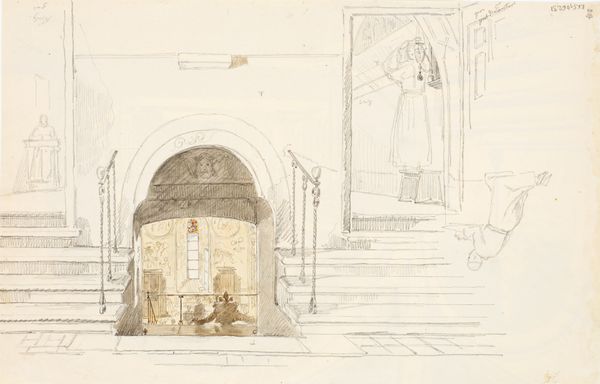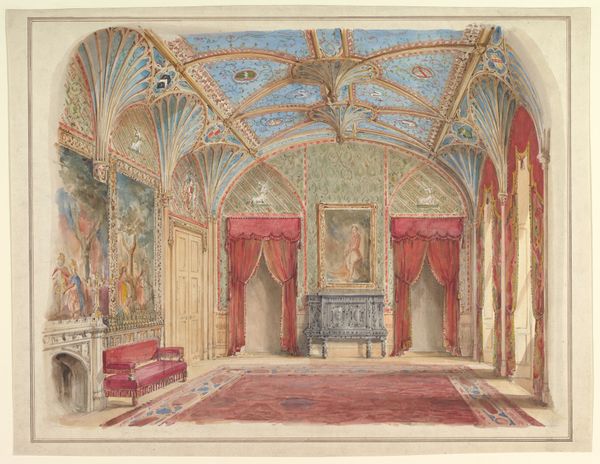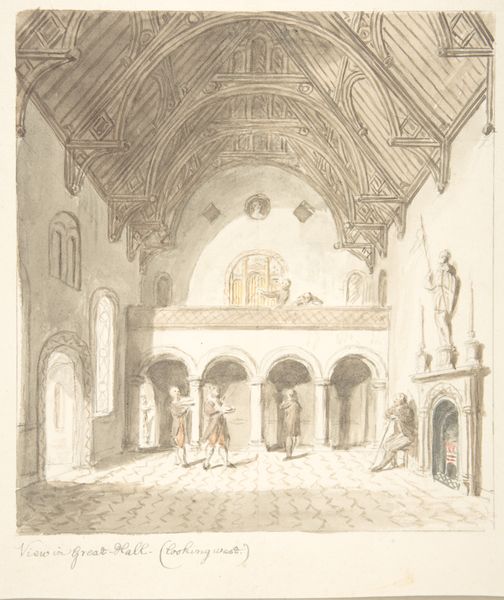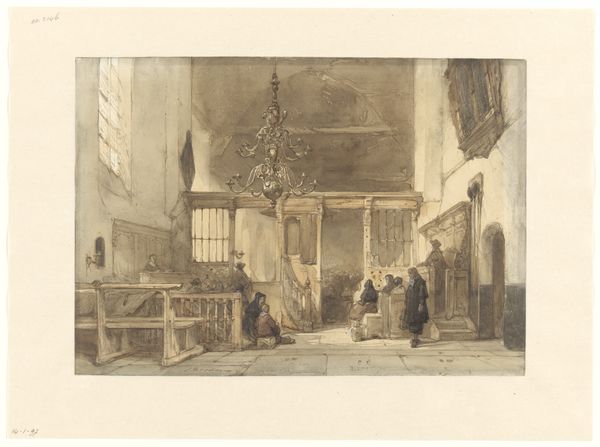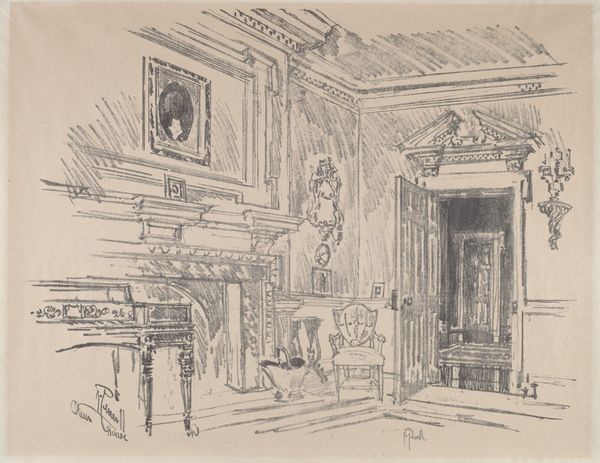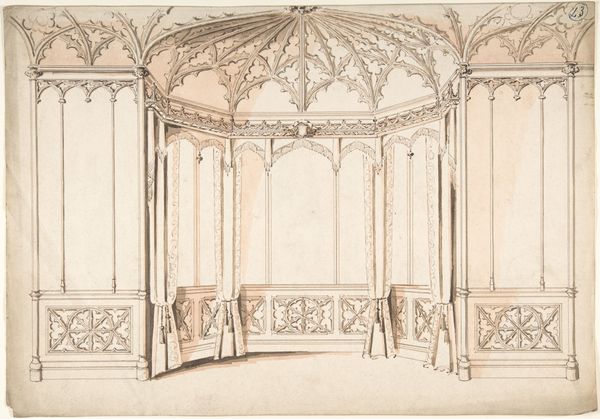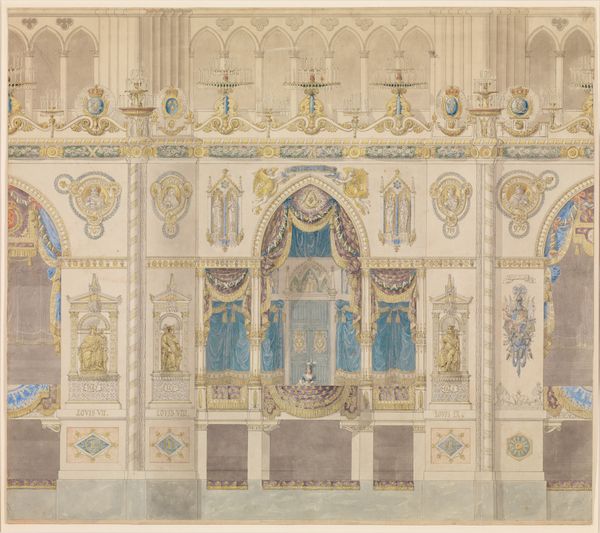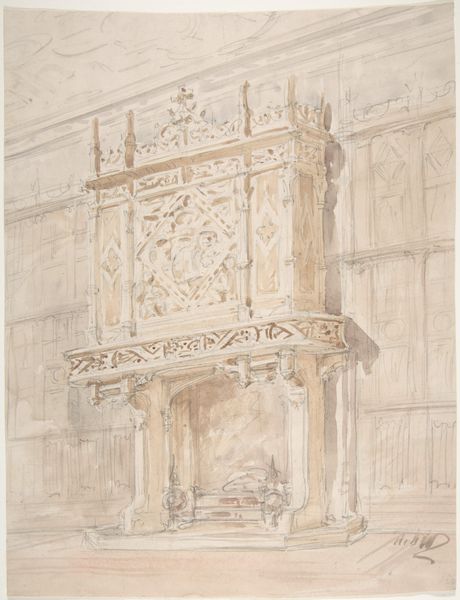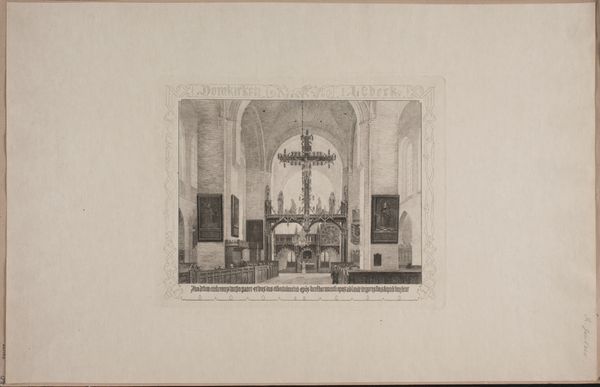
Interior of Saint Severin Church in Erfurt 1855
0:00
0:00
drawing, print
#
drawing
# print
#
landscape
#
romanesque
#
men
#
genre-painting
#
watercolor
Dimensions: sheet: 11 5/16 x 15 1/2 in. (28.7 x 39.3 cm)
Copyright: Public Domain
Editor: Here we have Carl Georg Anton Graeb's "Interior of Saint Severin Church in Erfurt," made in 1855. It's a watercolor drawing, and what immediately strikes me is the stark, almost skeletal quality of the architecture. It feels like a very controlled observation of space and light. What are your thoughts on it? Curator: The artist masterfully uses linear perspective to define space. Consider the receding lines of the floor, converging towards a vanishing point, creating a deep, illusionistic space within the confines of the paper. The palette is quite muted, wouldn't you agree? The use of watercolor contributes to a delicate atmosphere. Editor: It definitely is. It’s like he is more concerned with capturing the structure itself rather than creating a dramatic, painterly effect. I mean, what does the limited color palette convey? Curator: Precisely! It encourages the viewer to focus on the underlying structure and the interplay of light and shadow. Note how the light doesn't simply illuminate but models the forms, emphasizing the volumes of the columns, arches and altarpiece. Can you perceive the subtle shift in tonal values? Editor: Yes, now that you mention it, the subtle gradations give depth and solidity to otherwise faint outlines. There’s an interesting contrast between the smooth columns and the elaborate detail in the gothic altar. Curator: Absolutely. The juxtaposition of the plain surfaces against the intricate ornamentation further enhances the visual experience, creating an intriguing balance of simplicity and complexity. In structural terms, the linear elements are as important as any symbolic meaning, agreed? Editor: That makes a lot of sense. I appreciate how looking closely at the formal elements brings out so much of what's impactful about this drawing. It moves past documentation. Curator: It provides a richer, structural and perceptual understanding. These works become documents, with more structural intentions behind the choices of light, line, shape and tone.
Comments
No comments
Be the first to comment and join the conversation on the ultimate creative platform.
